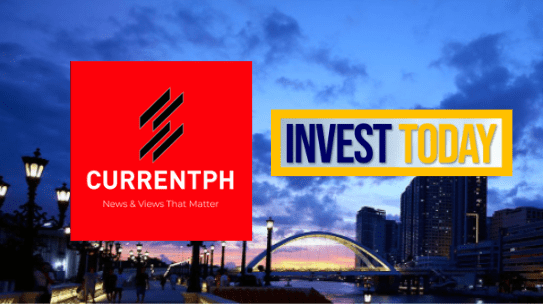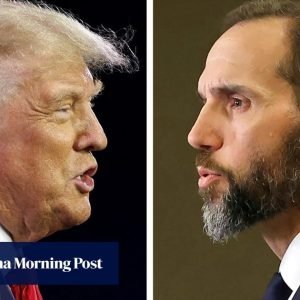
The Philippine equities market surged further in September, recording new highs above the 7,000-point level that seemed hard to breach in July and August.
To recall, it was in the April to June period that the Philippine Stock Exchange index (PSEi) began to falter, with the stock index falling almost below 6,100 points in the latter part of June. And in the first quarter, the PSEi seemed headed to 7,000 points as it reached 6,979.81 on April 1, only to start retreating after the government reported the disappointing 5.7% gross domestic product growth for the same period.
The value of trade also surged dramatically as the PSEi recovered, or to a daily average of P9.6 billion in the trading week of September 23 to 27, or 54% more than the year-to-date average of P6.2 billion.
Meanwhile, the highest close of the PSEi in September was 7,458.74 logged in the 26th of the same month. On the other hand, the lowest close was 6,882.12 points on September 4.
The PSEi closed four times above 7,400 points in September: September 23 at 7,417.25; September 24 at 7,432.21; September 26 at 7,458.74; and September 27 at 7,428.30.
From the start of 6,923.41 to the end of the month at 7,272.65, the PSEi gained 5% in September, which is the highest monthly gain for the stock index this year. Previously, the highest monthly increase of the PSEi this year was in February, surging by 4.86%.
The two primary factors for the stock market’s surge in September was the Bangko Sentral ng Pilipinas (BSP) and the US Federal Reserve implementing policy rate cuts on August 15 and September 15, respectively, as the inflation environment in the Philippines and the United States showed improvements.
In the Philippines, the year-to-date inflation rate as of August was 3.6%, or better than the 6.6% of the same period in 2023.
Meanwhile, US inflation has settled below 3% in August and July.
Also, towards the end of the month, the BSP said that the reserve requirement ratio of banks will be reduced, which will allow banks to increase their lending to both consumers and businesses.
PIVOTAL BSP RATE CUT
The stock market’s surge in September was also caused by one major event in August 15: The decision of the Monetary Board of the BSP to cut the key policy rate by 25 basis points (bps) to 6.25%.
And on August 16, the PSEi made a significant 2.31% jump or 154.46 points to 6,847.37. Prior to announcing the key rate cut, the Philippine Statistics Authority (PSA) announced that the July inflation rate went up to 4.4% from the 3.7% of June. The July inflation rate exceeded the 2% to 4% target of the government.
Rizal Commercial Banking Corp. (RCBC) chief economist Michael Ricafort said the PSEi’s close on August 16 is “new highs in nearly 4.5 months or since April 3, 2024” and is “sharply higher/better from the immediate low of 6,397.10 posted on August 5, 2024.”
“(This is) a day after the 0.25 local policy rate cut that came as a pleasant surprise, despite some mixed/cautious signals a few days ago,” Ricafort said.
The last time the BSP cut key interest rates was in November 2020, and this was ahead of the meeting of the Federal Open Market Committee (FOMC) of the US Federal Reserve on September 17 to 18.
“We expect the Fed to cut by September, possibly by 50 basis points in September and then 100 basis points until the end of 2024. And then maybe another 125 basis points in 2025. For us, that’s data, that’s one of the data points we look at. But it doesn’t drive our monetary policy. It’s just one of the numbers that we consider in our decisions about monetary policy,” BSP Governor Eli Remolona Jr. said.
Not surprisingly, the PSEi closed above 6,800 and below 7,000 points from August 16 to 30, indicating the stock index would soon break the 7,000-point mark that was considered the resistance level from the start of the current year.
And as expected, the PSEi finally broke the 7,000-point mark on September 12 on reports the US inflation hit a three-year low of 2.5%, increasing the possibility of a key rate reduction by the US Fed.
The better US inflation rate also boosted investor sentiment in Wall Street.
“The local bourse took cues from Wall Street’s overnight rise driven by the decline in the US’ headline inflation last August,” Philstocks Financial research manager Japhet Tantiangco said.
The lower inflation rate for August of 3.3% also boosted market sentiment, as this was within the government’s target of 2% to 4%.
And on September 19, or a few days after the FOMC of the US Fed to implement a 50 bps reduction in the policy rates in the United States, the PSEi entered the 7,200-point territory.
The move of the FOMC to implement a policy rate cut also boosted the possibility that the BSP will make another rate reduction in the next two meetings of its Monetary Board.
“Philippine shares closed above the 7,200 mark on Thursday (September 19), buoyed by the Fed’s first rate cut in four years, lowering interest rates by 50 basis points to a range of 4.75 percent to 5 percent,” Regina Capital Development Corp. head of sales Luis Limlingan said.
“Investors positively accepted the Federal Reserve’s 50 bps policy rate cut which is expected to give a big boost to the US’ economy. In addition, the market cheered the Bangko Sentral ng Pilipinas’ plan to cut banks’ reserve requirement ratios substantially this year,” Philstock Financials research manager Japhet Tantiangco added.
OTHER FACTORS
Besides the rate cuts by the BSP and US Fed, and lower inflation rate in September, market sentiment was also boosted by the stronger peso. In September, the Philippines peso hovered below P57 to a US dollar.
The last time the peso closed above P57 to a US dollar was on September 18 at P57.18:$1.
In the next trading weeks and months, the PSEi is seen testing the 7,500-7,600 level, as investors expect the BSP and the US Fed to make new key rate cuts.
Also, investors are expecting third-quarter gross domestic product (GDP) growth to be over 6%. To recall, first-quarter GDP was a disappointing 5.8% while second-quarter economic growth settled at a better 6.3%
The third-quarter GDP figure will be announced in the first week of November.
Meanwhile, lower inflation rates from September up to the end of this month will surely boost market sentiment, enabling the PSEi to test the 7,500-7,600 level.
Furthermore, major listed companies reporting better or higher third-quarter and January-to-September net incomes will boost investor sentiment, and make it more possible for the PSEi to enter the 7,500-7,600 level.








